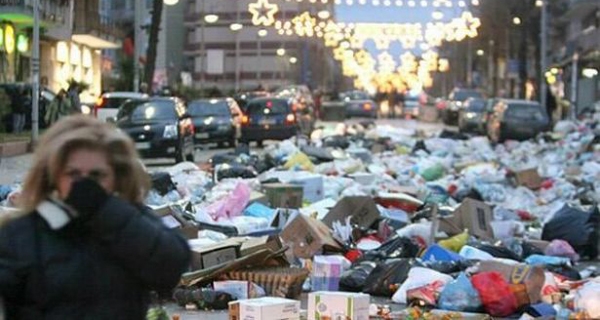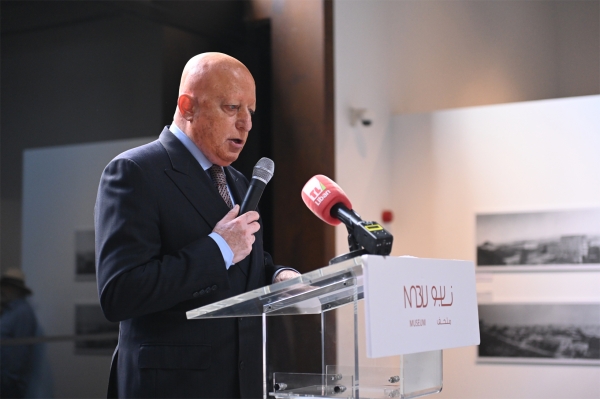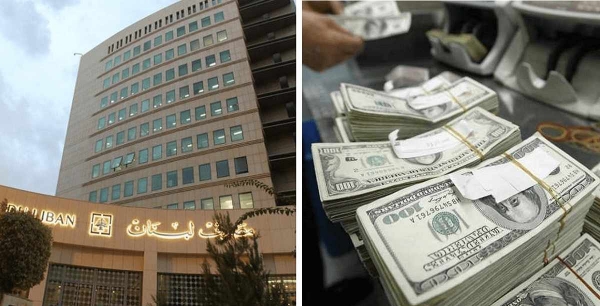Waste in Lebanon-Will the government succeed after chronic treatment failures?

شاهد الجدول كاملا
Reality and size of the problem
Around 4500 tons to 5000 tons of solid waste are produced in Lebanon on a daily basis, up from roughly 4000 tons prior to the influx of Syrian refugees. The waste is distributed by type as follows:
- 60%: organic materials that may be converted into fertilizers
- 15%: recyclable paper and cardboard
- 10%: recyclable plastics
- 5%: recyclable glass
- 5%: fabrics
- 5%: minerals and others
Geographically, amounts of waste are generated in:
- Beirut and Mount Lebanon: 2500 tons
- North and Akkar: 1000 tons
- Beqa’, Baalbeck and Hermel: 600 tons
- South and Nabatieh: 700 tons
Lack of central planning
In Lebanon, solid waste treatment is not predicated on a national plan covering all Lebanese territories. Rather, it is administered according to partial plans targeting certain areas:
- Sukleen and its subsidiaries collect garbage within the scope of administrative Beirut and Mount Lebanon’s non-remote areas.
- Lafayette in Tripoli, Al-Mina and Qalamoun
- NTCC in Saida and its vicinity
In the remaining areas of Lebanon, municipalities undertake the collection of waste and dispose it in randomly chosen dumps. The lack of a comprehensive plan increases the cost of collecting garbage and treating only a fraction of it, thus leaving the problem largely unsolved. The spending on waste collection and treatment in Lebanon is estimated at USD 5 million, an amount paid from the Independent Municipal Fund or the direct funds of municipalities.
Phased plan
The significant cost of solid waste collection and treatment coupled with the landfills’ incapacity to accommodate the growing amounts of waste, which are fueled by the failure of treatment and recycling operations to target more than 20% of the overall waste material, have prompted the government to request the Council for Development and Reconstruction to issue a request for proposal to award cleaning service contracts to new companies. The proposal should not deny the present companies their right to participate in the bid. Until such bid materializes, it has been agreed to adopt the following phased plan:
- Expanding the landfill at Naameh, which accommodates the waste generated in Beirut and Mount Lebanon
- Granting those municipalities that establish a sanitary landfill or plant aimed to dispose of their own waste, an increase in their assigned Independent Municipal Council revenues equaling twice their normal share and giving those municipalities willing to set up a facility to accommodate the waste produced by at least ten other towns/municipalities an increase worth ten times their normal share.
- Extending the current contracts signed with Sukleen and Sukumi, which operate in Beirut and Mount Lebanon until January 17, 2015.
Future plan*
As for the new future plan covering all of Lebanon, it hinges upon the following:
- Thermal decomposition and conversion of waste into energy in large cities as well as drafting the legal texts ensuring the right of the private sector to produce and sell the said energy.
- CDR’s unification of the requisite terms for the collection and transportation of garbage to treatment plants on all Lebanese territory.
- Centralizing the responsibility for waste treatment.
- State’s financing of all the required facilities.
- Tasking the private sector with operating and maintaining all treatment plants in exchange for a certain amount for every ton.
- Ensuring that the firm tasked with constructing the facilities is the same one operating them.
It is uncertain if this plan will ever see the light and succeed in efficiently addressing the crisis of waste management in Lebanon at the lowest possible cost. Are are we marching towards an extension of contracts with the current firms that keep the impasse unsolved: untreated waste at exorbitant costs?

- Sukleen and its subsidiaries collect garbage within the scope of administrative Beirut and Mount Lebanon’s non-remote areas.
- Lafayette in Tripoli, Al-Mina and Qalamoun
- NTCC in Saida and its vicinity
In the remaining areas of Lebanon, municipalities undertake the collection of waste and dispose it in randomly chosen dumps. The lack of a comprehensive plan increases the cost of collecting garbage and treating only a fraction of it, thus leaving the problem largely unsolved. The spending on waste collection and treatment in Lebanon is estimated at USD 5 million, an amount paid from the Independent Municipal Fund or the direct funds of municipalities.
Phased plan
The significant cost of solid waste collection and treatment coupled with the landfills’ incapacity to accommodate the growing amounts of waste, which are fueled by the failure of treatment and recycling operations to target more than 20% of the overall waste material, have prompted the government to request the Council for Development and Reconstruction to issue a request for proposal to award cleaning service contracts to new companies. The proposal should not deny the present companies their right to participate in the bid. Until such bid materializes, it has been agreed to adopt the following phased plan:
- Expanding the landfill at Naameh, which accommodates the waste generated in Beirut and Mount Lebanon
- Granting those municipalities that establish a sanitary landfill or plant aimed to dispose of their own waste, an increase in their assigned Independent Municipal Council revenues equaling twice their normal share and giving those municipalities willing to set up a facility to accommodate the waste produced by at least ten other towns/municipalities an increase worth ten times their normal share.
- Extending the current contracts signed with Sukleen and Sukumi, which operate in Beirut and Mount Lebanon until January 17, 2015.
Future plan*
As for the new future plan covering all of Lebanon, it hinges upon the following:
- Thermal decomposition and conversion of waste into energy in large cities as well as drafting the legal texts ensuring the right of the private sector to produce and sell the said energy.
- CDR’s unification of the requisite terms for the collection and transportation of garbage to treatment plants on all Lebanese territory.
- Centralizing the responsibility for waste treatment.
- State’s financing of all the required facilities.
- Tasking the private sector with operating and maintaining all treatment plants in exchange for a certain amount for every ton.
- Ensuring that the firm tasked with constructing the facilities is the same one operating them.
It is uncertain if this plan will ever see the light and succeed in efficiently addressing the crisis of waste management in Lebanon at the lowest possible cost. Are are we marching towards an extension of contracts with the current firms that keep the impasse unsolved: untreated waste at exorbitant costs?

شاهد الجدول كاملا








Leave A Comment